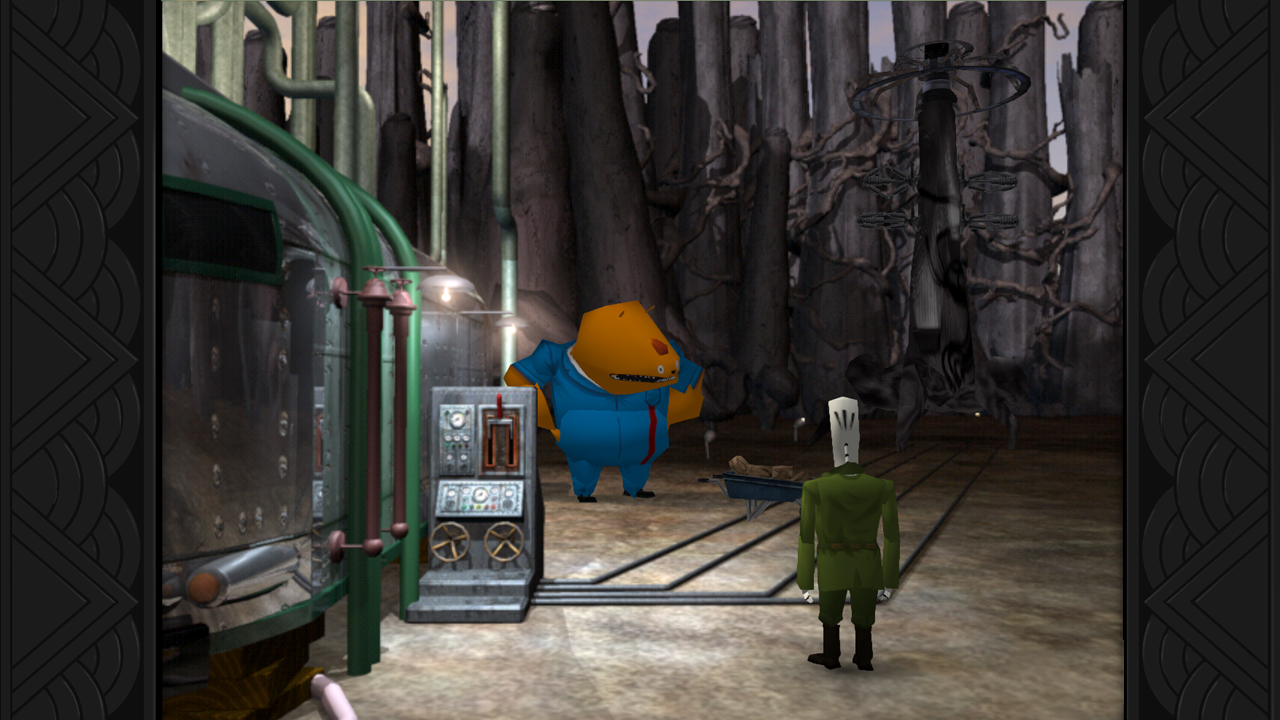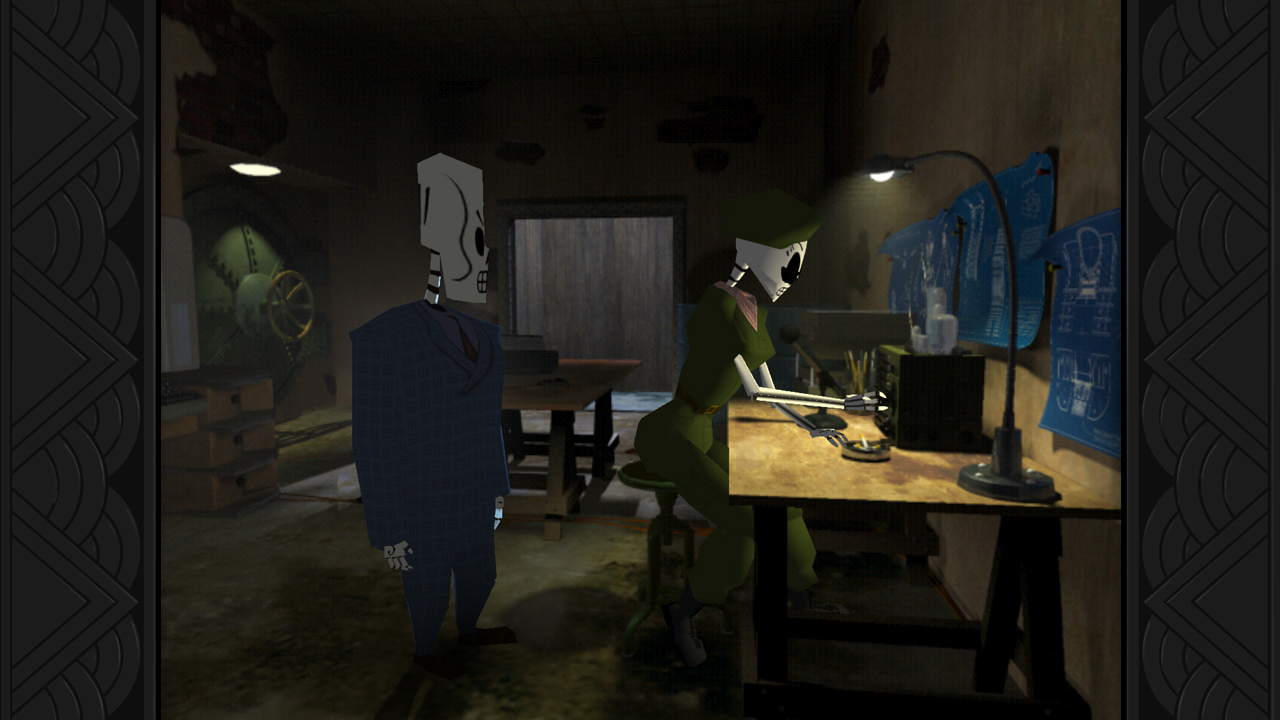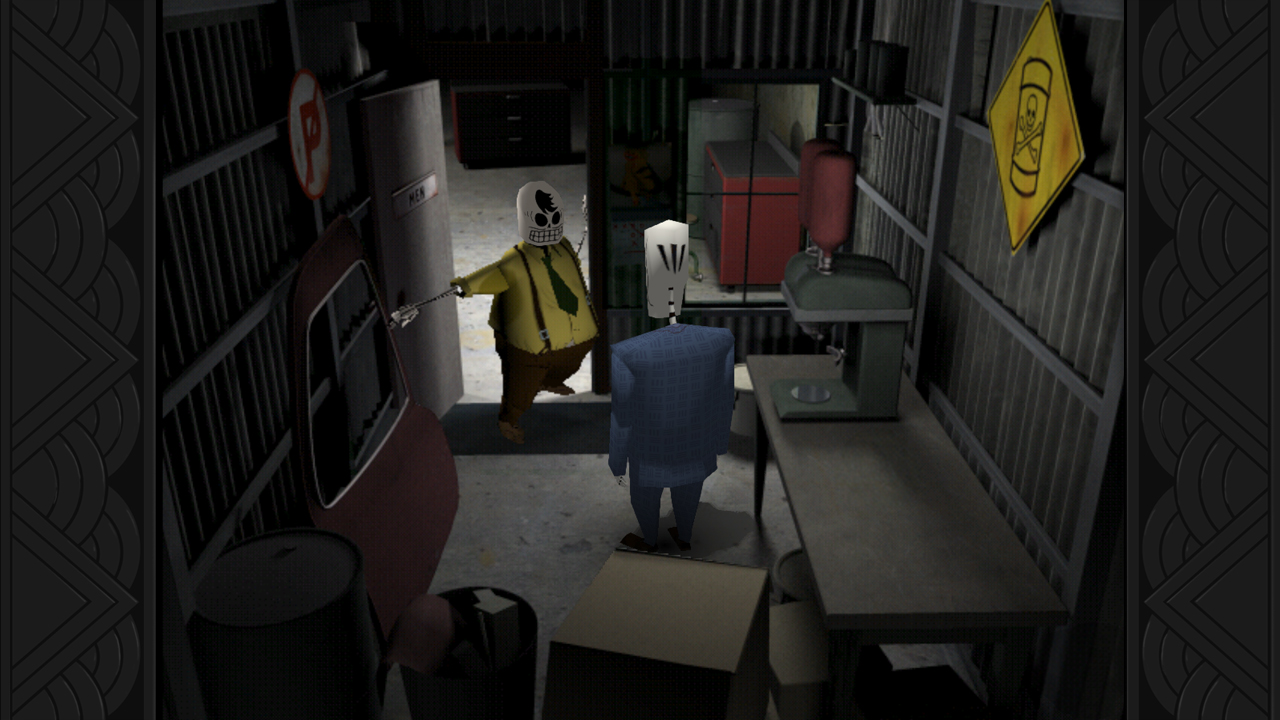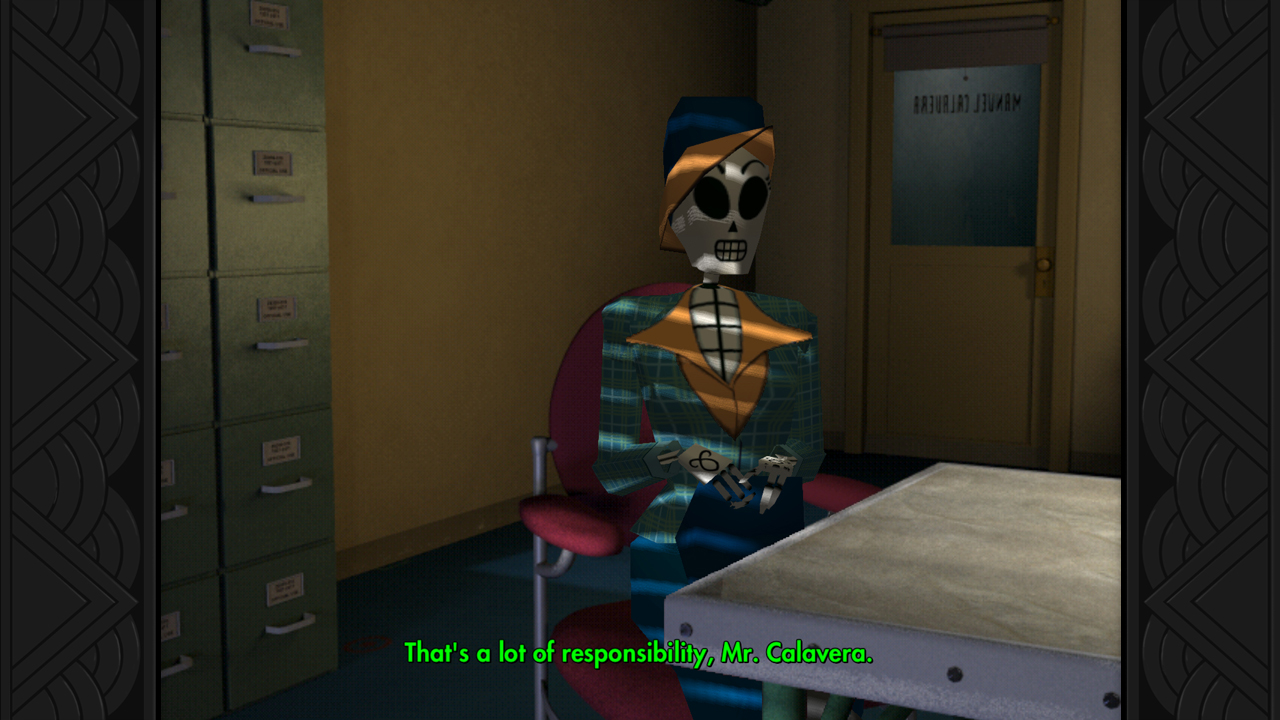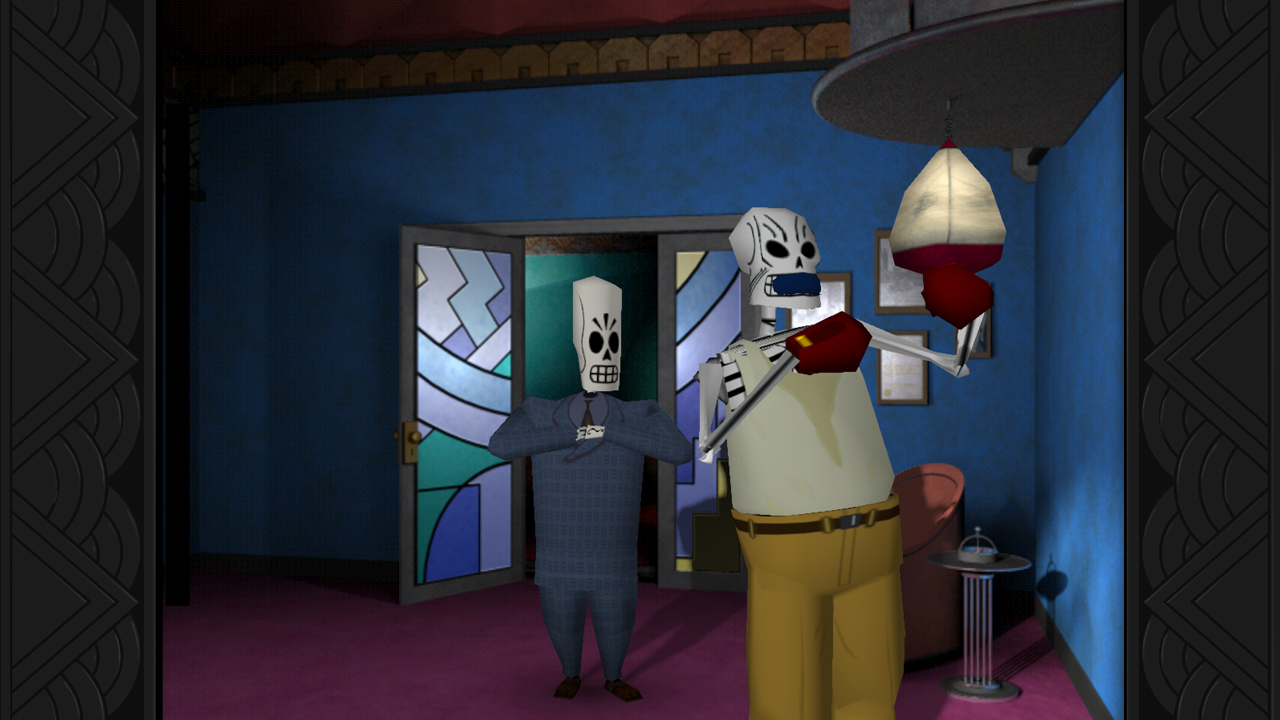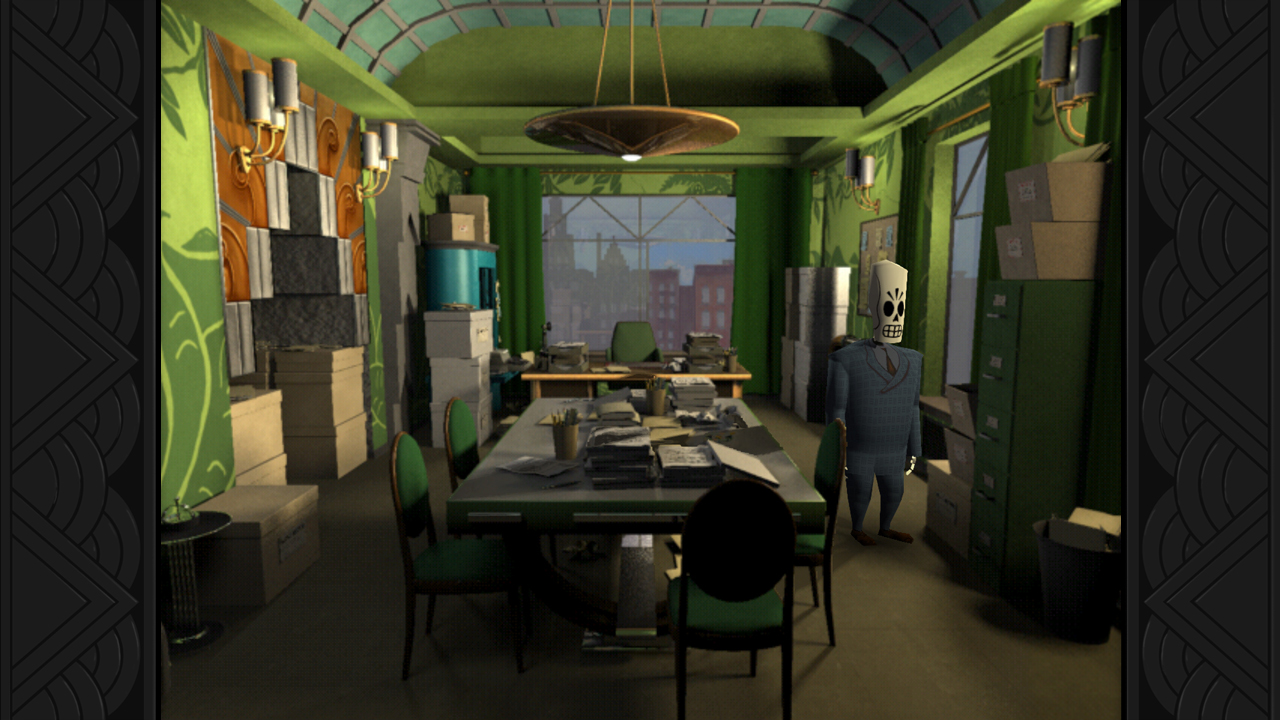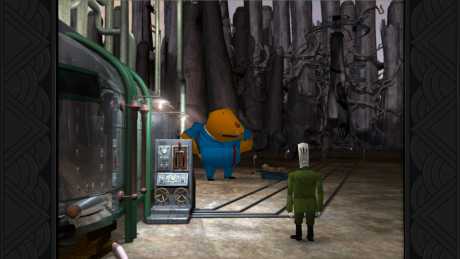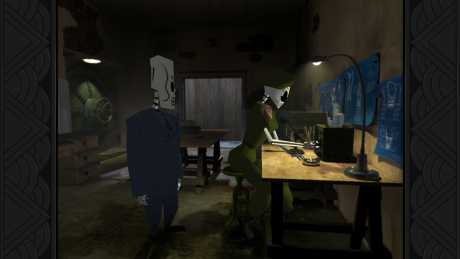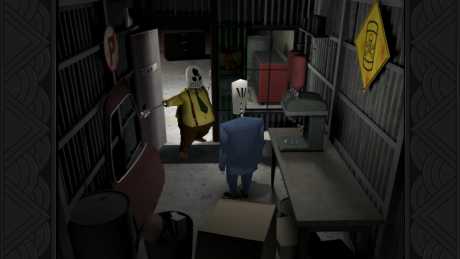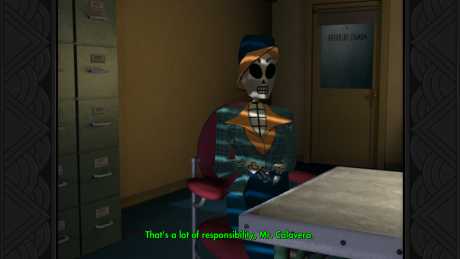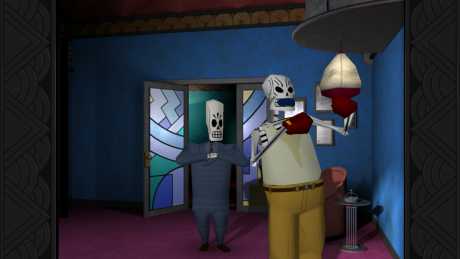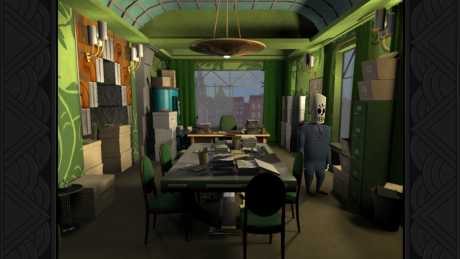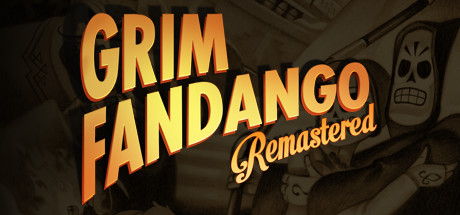Grim Fandango is an old-school adventure game that follows Manny Calavera and his journey through the Land of the Dead on his way to the Land of Eternal Rest. While traveling, he encounters a variety of people and becomes embroiled in a nefarious underworld conspiracy.
Presentation
When playing Grim Fandango, the first thing I noticed was the fantastic production value, especially for a game from 1998. The backgrounds are detailed, the voice acting is superb, and the writing is excellent. It feels grand and expansive, even though it’s a relatively modest production.
Graphically, the remaster has significantly overhauled the blurry textures of the original. This doesn’t apply to cutscenes, which were already animated fairly well. Notably, you can switch between the original and remastered graphics in real-time, letting you truly appreciate the improvements. Thankfully, nothing was visually redesigned, so the graphics get a fresh coat of paint while the art style remains intact.
The game’s aesthetic pulls inspiration from the Mexican holiday, Día de Los Muertos, Aztec mythology, as well as classic noir films. It’s an unusual combination that doesn’t seem like it would work, but it somehow manages to blend together seamlessly. The noir elements also add a sinister side to an otherwise cheery vision of the afterlife.
The other side of Grim Fandango‘s excellent presentation is sound. Both the soundtrack and voice acting are superb and complement the title’s atmosphere beautifully. The score is primarily jazz with a small amount of Mexican folk music worked in. It fits the setting perfectly and does a great job setting the tone for each scene. It can get repetitive if you are stuck on a puzzle and have to wander around as the music loops, but even then, the tracks are still enjoyable.
The sound design is generally solid, aside from two notable problems. The first is that the sound mixing is occasionally horrendous. It’s rare, but when it happens, it’s extremely noticeable. You’ll be in the middle of a normal conversation and then hear a line or sound effect that is way louder than the rest of the audio, sometimes covering up plot-related dialogue. The second is the usage of looped dialogue that gets irritating after only a few listens. If you have to stay in a room to solve a puzzle, you might hear Glottis obnoxiously imitate a car engine a dozen times. Overall though, these issues are relatively mild and didn’t have a huge impact on my enjoyment of the game.
As for the voice acting, it’s amazing how high the production value is. This could have easily been the cast of a high-budget animated film. The voice acting is good enough that someone who doesn’t understand English would still comprehend the mood of a scene; it’s a perfect example of video game voice acting done right. Some characters are a little too annoying, but it has more to do with their writing than the voice actors doing a bad job.
Writing
The writers of Grim Fandango did an exceptional job balancing dialogue between important plot moments and interesting filler. Conversations avoid the common video game problem of being so focused on exposition that they feel unnatural. Sure, talking to another character still drives the majority of the plot, and you can usually guess which dialogue option is the most important one, but the variety and quality of conversation topics make you want to hear the filler dialogue anyway.
A large cast of characters in a game typically results in shallow, one-dimensional caricatures, but in Grim Fandango, most are written with a fair amount of depth and characterization. Even those that initially seem like one-off jokes often get more development as the story progresses. It’s a welcome reprieve from interacting with characters whose sole reason for existence is to deliver exposition. It isn’t wholly immune to this issue as a point-and-click adventure game, but it occurs relatively rarely, given the genre’s track record.
The overall narrative is steeped in noir tropes, so don’t expect many unique story beats. Yet, despite its formulaic plot, it still manages to be a fun adventure. The experience is a bit like reading a decent Sherlock Holmes novel; you know the basic story structure ahead of time, but you enjoy it for what it is.
Gameplay
Exploring the world of Grim Fandango is a joy until you have to deal with the puzzles. The problem with them is that some require gymnastic leaps in logic that the average player would never figure out in a reasonable time frame. Specifically, certain puzzles require you to overhear a line of dialogue to hint at the solution. Others involve time-consuming trial and error. Before I was even halfway done with the game, it had become a slog of puzzles that were often too clever to be enjoyable for me. Thankfully, I came across uhs-hints.com, which had a great hint-based walkthrough for Grim Fandango. It gives hints one at a time, so it’s perfect for when you only need a push in the right direction. For me, this fixed the worst part of the gameplay, the frustratingly difficult puzzles. On the other hand, if you love old-school adventure games, you probably won’t need a walkthrough, as the puzzle difficulty is on par with other genre classics.
When you aren’t solving cryptic point-and-click puzzles, you’ll be wandering around talking to everyone you meet. This is where the game shines. You learn about the world and gain insight into different characters’ backstories and motivations while working your way to the next location. Some parts of the world have overly long transitional animations, which quickly add up if you have to backtrack. When combined with the handful of annoying puzzles, Grim Fandango can waste your time on a relatively minor part of the game. The payoff was great, but the journey there was sometimes tedious.
Verdict
Grim Fandango feels dated when it comes to puzzle design, but the vast majority of the game has aged exceptionally well. Overall, the gameplay is underwhelming, but the writing and voice acting do most of the heavy lifting. It has a bit of a learning curve for players that aren’t familiar with classic adventure games, but it’s still manageable. I’d recommend it to anyone that’s looking for a quality story with high production values, as long as they don’t mind working through mediocre puzzles on the way there.
8/10
Zitat:
No performance issues running on: AMD Ryzen 5 1600, 16 GB RAM, NVIDIA GeForce 1070
Zitat:
